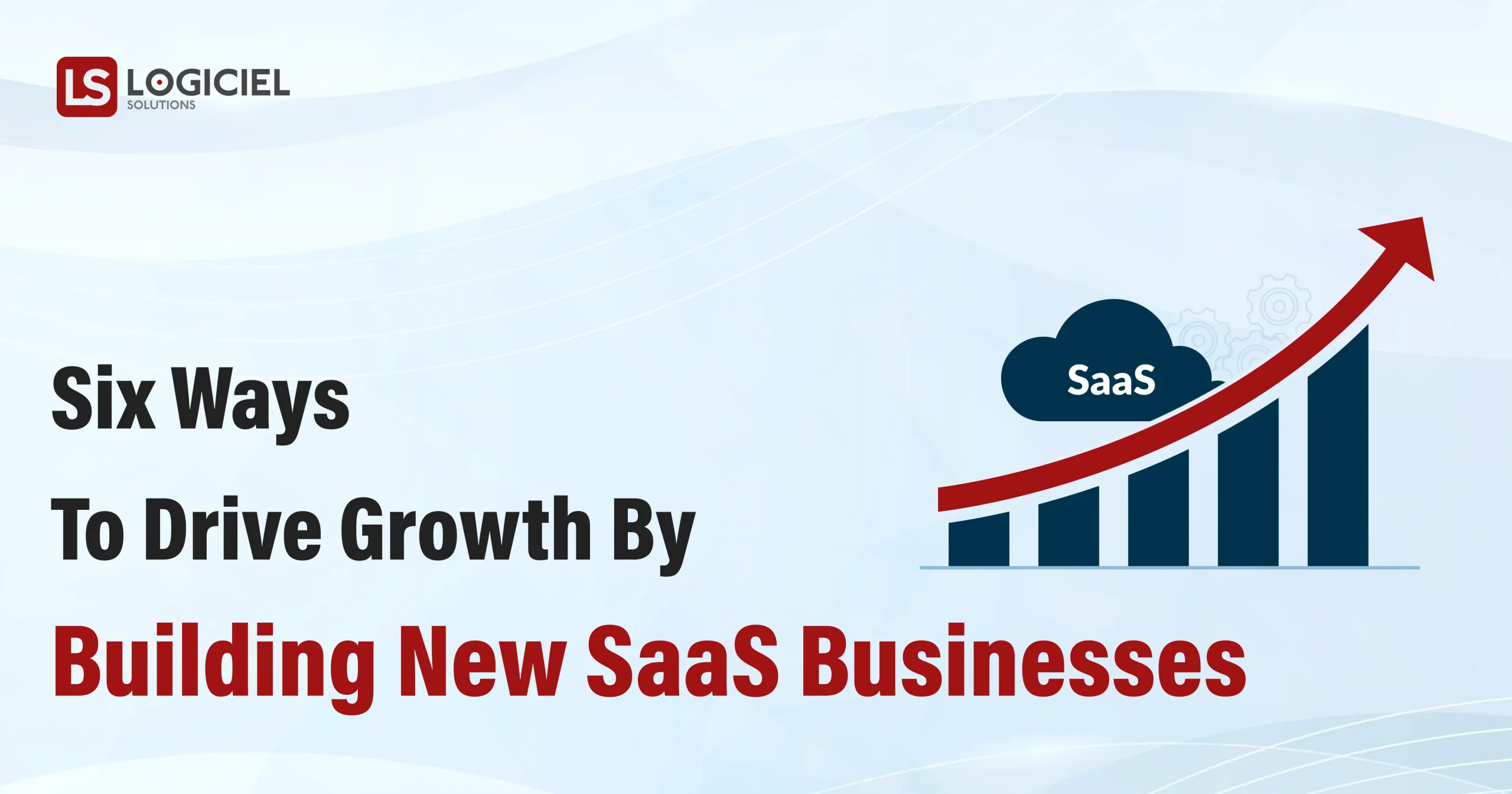For that, the SaaS industry has evolved into a treasure chest; you only need to insert the right key. The range of revenue growth for a company from year to year is typically between 15% and 45%, and it is anticipated that the SaaS market for applications will be worth $168.6 billion by 2024. (appsruntheworld)
In addition, considering the dominance of technology as the leading sector in the world with immense revenue potential, the share of cloud-based solutions can be valued by the projection that 85% of the software used by organizations will be SaaS By 2025. (BetterCloud)
Moreover, SaaS is beyond profitability and growing bigger! You must focus on customer acquisition and retention; your monthly revenue is on the way with the digit you predict. Sounds simple?
However, it is difficult for non-tech businesses to build and grow their product, which is made easy by hiring a dedicated development team. Besides, your logistics and overhead costs are lower than physical products, saving you tons of money! Using the power of the internet to resolve users’ pain points and allowing your product to be flexible, robust, and expeditious can be a game-changer for you.
Further, the SaaS market is growing at a CAGR of 19.7% in the forecast period (2023-2030). Yet, the SaaS market is noisy and competitive; a McKinsey & Company survey found that only 20% of SaaS companies make it past their first five years in business.
In this scenario, the challenge for businesses is driving growth and finding ways to drive growth. Utilizing our rich expertise, we will walk you through the six strategies to propel your business growth:
Beginning innovation through tried-and-true techniques
Large enterprises turn customer needs into requirements, endeavoring to fix them in the existing product that can be helpful but still needs to solve the problem. It calls for meticulous observation and holistic analysis of the customers to understand their pain points and offer a solution best suited to their demands.
Let’s talk about Adobe, renowned for its creative software suite, including applications like Photoshop, Illustrator, and InDesign. Historically, Adobe sold its software through perpetual licenses, requiring customers to make a one-time purchase to own the software version. However, this approach came with challenges regarding piracy, software version compatibility, and the need for customers to make significant upfront investments.
In response to these challenges and the evolving needs of their user base, Adobe embarked on a transformational journey. They recognized that many of their customers were looking for greater flexibility, continuous updates, and easier access to Adobe’s suite of tools. To address these needs, Adobe introduced the Creative Cloud, a subscription-based service that provided access to their entire software suite through a monthly subscription fee.
It allowed Adobe to combat piracy and foster a more direct and ongoing relationship with its customers. It offered benefits like regular updates, cloud storage for projects, and the ability to use the software on multiple devices, solving real problems faced by their user base.
However, this transition was challenging. Some customers were initially resistant to the subscription pricing, and concerns were raised about data privacy and reliance on cloud services.
Despite the initial skepticism, Adobe’s move to SaaS proved successful over time. The enhanced collaboration features and affordable entry points attracted a more comprehensive range of users, allowing Adobe to maintain a consistent revenue stream while delivering ongoing value to its customers.
The example of Adobe’s transition to the Creative Cloud illustrates how a well-established company can recognize customers’ changing needs, problems, and preferences and pivot towards innovation to serve them better.
Startups are more adaptable and ingenious through iterative test-and-learn cycles, aiming to develop novel solutions that cater to customer demand by following a collaborative and iterative approach from the outset involving engineers, designers, and data scientists. They are then actively seeking initial user feedback and maintaining close engagement with frequent users, effectively navigating unexplored latent opportunities.
Seize the Value Within Your Current Digital and Data Assets
Many leading incumbents are unaware of the potential their preexisting data holds that they utilize for a variety of purposes. In some cases, underestimating and lacking innovators within the company left the opportunities untapped.
The data available from different sources enables you to keep tabs on your customers, how they interact with the goods and services you offer, and assess their satisfaction with the company. Some companies utilize this data to acquire information on their customers’ propensity to leave, deciding when customer service representatives get in touch with them to maintain retention rates.
Digital and data tools provide you with a broader view of your audience regarding their preferences, purchasing behaviors, and psychological trajectories while interacting with your offering. You may develop an entirely new idea for a SaaS using the previously collected data and outsourcing the additional data needed to help you better serve your customers and address their problems.
It is a creative business process that evaluates the data gap and pinpoints the best solutions to provide more accurate data. It requires the leadership of product managers and business strategists to create something entirely new out of what is already in the box.
While primarily known for its brick-and-mortar stores, Walmart recognized the potential within its vast customer data to gain deeper insights into customer behaviors and preferences. By analyzing purchase histories, browsing patterns, and in-store interactions, it could identify trends and make informed decisions about inventory, marketing strategies, and customer engagement.
Building on this foundation, it developed a personalized shopping experience for its customers, offering tailored product recommendations and exclusive deals based on individual preferences through its online platform and mobile app. This not only enhances customer satisfaction but also encourages increased spending and loyalty. It integrated its digital and physical platforms; customers can order products online and choose delivery or pickup options, bridging the gap between online and offline shopping.
This digital transformation allowed Walmart to remain competitive in an increasingly digital retail landscape and secure its position as a leader in the industry.
Be proactive, ready to scale
The SaaS market is ever-evolving, and there is no validated roadmap. The product goes through rapid turnarounds and iterations. Regular reviews and monitoring user engagement may pivot your way back to make adjustments; planning both a move forward and a stride backward is required. The wonderful thing about building applications is that it gives you countless chances to excel.
A detailed roadmap and flexible, proactive approach can do wonders for you. There is always a plan of innovation based on (Key Performance Indicators) KPIs. That’s when the timing plays the game. You must have a full-fledged plan to introduce new features and, most importantly, when. Your users would like to know that the platform they have chosen will serve their requirements and keep improving.
In order to scale and evolve, all your bids are on the technical architecture of your product. Most businesses are shifting to the cloud for their apps’ design, development, support, and maintenance due to its flexibility and cost-effectiveness. You’ll stay current and on pace by incorporating solution architects and DevOps into your team to manage workloads and ensure seamless operations.
Slack, for instance, when they noticed that users were utilizing the platform for more than just workplace communication, they pivoted to position themselves as a hub for various business tools and integrations. Their roadmap was not fixed; it evolved in response to user behaviors, trends, and emerging technologies.
Expansion Beyond Initial Users: While Slack gained traction among tech companies, they recognized the need to expand their reach beyond the tech sector. They actively worked on tailoring their product to address the unique requirements of diverse industries such as marketing, healthcare, and finance. Slack successfully broadened its customer base by customizing its features and integrations to align with the needs of different user groups.
The foresight in planning for scale and its adaptability paid off tremendously. The platform grew from a startup to a global enterprise collaboration giant, capturing both the attention of individual users and large organizations.
Selecting the right talent
Discovering the best talent is a complex process. The first steps are to find the most effective sources to assemble the right people for your project, assess them in accordance with your requirements, and combine them into one team. Recruitment requires an independent financial outlay and months of hard work to hire the right professionals. If you outsource a company, it will become easy for you as you have to select from a diverse pool of talent without any commitment, training, and work environment practices.
Whether you go for employing individuals for your in-house team, collaborating with a dedicated team, or hiring freelancers, you must look for abilities as well as attributes. Investing in proficient, skilled professionals does the footing for your vision, but you must consider a few qualities just as you consider their expertise. That is the motivation to excel in their work and a feeling of ownership of the applications they build. Highly charged-up individuals with a mutual understanding of the goals can make you win.
You can involve yourself in communities like LaunchPass and GitHub to interact with developers, sharing their knowledge and expertise. In addition, the digital landscape boasts a plethora of online job portals and academic institutions hosting employment expos, serving as potential conduits for identifying suitable candidates.
To make yourself more enticing to seasoned experts, you can organize upskilling programs and develop your unique value proposition in correspondence with your organization’s ethos and principles. Furthermore, presenting your company as fostering an ’employee-first culture’ can turn many heads in your direction.
Customize pricing strategy based on product usage
After gaining market share with basic features, businesses set out to develop various features to enhance user experience. Tracking tools available allow you to evaluate the value of features based on product usage, helping you offer tailored pricing models that fit each user’s unique needs. It benefits you twofold: you prioritize the needs of your users, preserve their loyalty toward your product, and open up new ways to generate revenue.
Slack, for instance, tracks how teams and individuals use their messaging and collaboration features and which integrations are most popular. This data allows it to offer different pricing tiers based on its customers’ usage levels and specific needs.
They offer a free tier with basic features, but as users or organizations require more advanced features, integrations, and storage, they can subscribe to paid plans. How customers use their platform impacts its pricing and feature structure.
This approach is quite different from the one-size-fits-all approach of traditional products and services. It’s all about offering customized, flexible pricing plans that make your customers happy and boost your bottom line. Furthermore, it creates opportunities for multiple pricing alternatives, such as:
Subscription Pricing, where customers pay a regular fee, usually monthly or annually, to access and use the software. It’s predictable for customers and supplies recurring revenue for the company.
Cost By Volume of Usage charges customers based on the quantity or volume of their usage. For instance, a cloud storage service might charge based on the amount of data stored or the number of emails sent.
Cost By Time of Day costs differ depending on when the software is used. By way of example, during typical working hours (e.g., 9 AM to 5 PM), when businesses hold most of their meetings, the cost per user or meeting room could be at a standard rate.
Cost Per Use allows customers to pay based on how often they use the software or specific features. For example, if a customer uses a particular tool within the app five times, they are charged for those five uses.
Cost is Based on the Value the Customer Captures, where the price is tied to the value the customer derives from using the software. If the software helps customers save money or generate revenue, they might be charged a percentage of those savings or earnings.
In addition, it requires companies to modify their sales strategies and train business development managers to connect with customers via omnichannel and promote personalized pricing plans.
Prioritize key growth indicators
High hopes call for endurance. Your product needs to expand quickly, but you must be patient to make it successful. When the product takes time to deliver lucrative results, the first instinct is to pull back the support. In such a situation, you must understand that even a productive seed with adequate germination still needs time to bear fruit.
Apart from profit and revenue, there are metrics that you must consider while assessing the growth of your business – receptive audience, market demand, the portion of potential customers, and most importantly, retention rate.
Businesses receive substantial funding at the ideation phase if the appropriate people are approached. Capital contributions help you reduce your risk while giving you the auxiliary experience and backing you need to develop your company.
To Sum Up
In the highly competitive SaaS market, seizing opportunities with next-generation products is the path to a thriving business. To truly stand out, your unique value proposition must align closely with the specific needs of your users. Placing your users at the heart of everything you do is a pivotal strategy that sets the stage for success.



